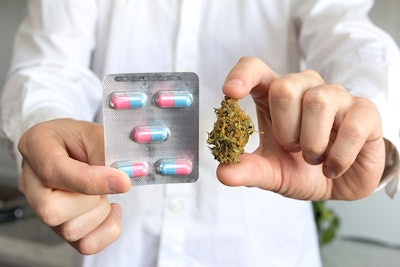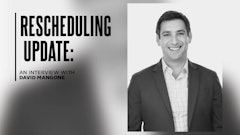
Although many have embraced the medicinal properties of cannabis, a lack of research has left a void of evidence to support these claims. Columbia Care wants to change that.
The medical cannabis company plans to compare the active ingredient in its precisely formulated cannabinoid-based products with the active ingredient in opioids in the only study currently funded by the National Institute on Drug Abuse (NIDA) to research the connection between opioids and medical cannabis.
The study will be conducted through the Columbia University Department of Psychiatry, which has been awarded an R21 research grant from NIDA to work alongside Columbia Care to research how using the cannabis company’s dose-metered cannabinoid formulations influences opioid use and overdose risk among neuropathy patients with non-cancer pain conditions. The venture will expand on data points collected by Columbia Care independently of the university, which examined opioid use in 76 New York patients who used the company’s medical cannabis consistently over nine months. This data demonstrated that 62 percent of patients decreased or stopped opioid use while using Columbia Care’s products.
Here, CEO Nicholas Vita outlines the details of the study and how the outcome could help change the way lawmakers, scientists and the medical community think about medical cannabis.
Cannabis Business Times: What does Columbia Care’s collaboration with Columbia University entail? What does it allow the company to do that wouldn’t have been possible without the partnership?
Nicholas Vita: It’s specifically within neuropathy, excluding cancer. I think what’s so interesting is that for the first time in history, you have a precisely formulated product that’s using cannabinoids that you can basically compare against in a consistent way, in a longitudinal fashion versus a standard of care. So, it’s not just about the plant versus a drug, it’s about the actual amount of active ingredient versus the amount of active ingredient and the impact that has on those populations. It’s a really fascinating, unique trial design that basically was enabled by the fact that you now have products of this quality that are available in the marketplace.
Columbia Care is fully integrated, and we have been collecting data. What we did is we’ve opened up our longitudinal database in New York to the New York Psychiatric Institute, which is part of Columbia University’s medical school system. They conducted a retrospective analysis and a review of the various data points that we’ve collected over time. They really pinpointed and drilled in on the nature of the inquiry, and they’ve obviously set the parameters for us to determine what data is inclusive and relevant and what data is not.
It’ll be a much broader study, and the question is whether or not it will be more expansive in terms of geographies. Everything will be driven by Columbia, but the patients and the source material for study from the cannabis perspective will come from Columbia Care, so it’s a true collaboration of them using their expertise and us using ours.
CBT: What does Columbia Care hope to gain from this study?
NV: I think what we hope to gain is the validation, using a much larger population, that the introduction and availability of precisely dosed cannabinoid-based medicines actually does have a direct impact on utilization rates of opioids and can demonstrate a direct reduction in the utilization of opioids in a variety of otherwise unmet medical needs, particularly folks in neuropathy. I think unlike every other study, which has really been more of a meta-analysis, this is going to be a longitudinal study and it will involve a direct comparator of medication and active ingredients. By that I mean: traditionally, when people have used extracted products or flower-based products, you really can’t compare that data over time because the lot batch inconsistency is just too high. So, you may have anecdotal evidence, but you really don’t have comparative data or comparable data over a sequence of periods. In this case, you will, and that’s profoundly important for the quality of the analysis and the quality of the conclusions.
CBT: What larger impact do you see this research having on the cannabis industry as a whole?
NV: I think it really validates the notion in a bulletproof, scientific way that the properties and the chemical properties of the cannabis plant have far-reaching benefits that have yet to be really embraced by the broader public. So, I think it’s a validation from a variety of perspectives, but it also reaffirms the fact that the cannabis plant provides potentially some great solutions to some very significant medical problems.
We’re very excited about it. We think that this could really change the way policy makers, the scientific community and the medical community think about the utility of cannabis-based products.
Editor’s Note: This interview has been edited for length and clarity.
























